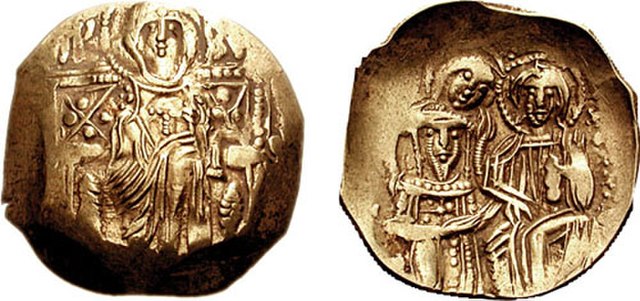The Empire of Nicaea or the Nicene Empire was the largest of the three Byzantine Greek rump states founded by the aristocracy of the Byzantine Empire that fled when Constantinople was occupied by Western European and Venetian armed forces during the Fourth Crusade, a military event known as the Sack of Constantinople. Like the other Byzantine rump states that formed due to the 1204 fracturing of the empire, such as the Empire of Trebizond and the Despotate of Epirus, it was a continuation of the eastern half of the Roman Empire that survived well into the medieval period. A fourth state, known in historiography as the Latin Empire, was established by an army of Crusaders and the Republic of Venice after the capture of Constantinople and the surrounding environs.
Nicaea city wall, Lefke gate; Iznik, Turkey
Coin issued by Michael VIII Palaeologus to celebrate the liberation of Constantinople from the Latin army, and the restoration of the Byzantine Empire.
The Byzantine Greeks were the Greek-speaking Eastern Romans throughout Late Antiquity and the Middle Ages. They were the main inhabitants of the lands of the Byzantine Empire, of Constantinople and Asia Minor, the Greek islands, Cyprus, and portions of the southern Balkans, and formed large minorities, or pluralities, in the coastal urban centres of the Levant and northern Egypt. Throughout their history, the Byzantine Greeks self-identified as Romans, but are referred to as "Byzantine Greeks" in modern historiography. Latin speakers identified them simply as Greeks or with the term Romaei.
Scenes of agricultural life in a Byzantine Gospel of the 11th century.
Joshua portrayed as a soldier wearing the lamellar klivanion cuirass and a straight spathion sword (Hosios Loukas).
A page of 5th or 6th century Iliad like the one a grammarian might possess.
Gold solidus of Justinian II 4.42 grams (0.156 oz), struck after 692.






